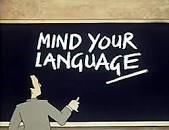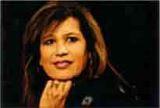Mind your ‘English’ Language – By Marie Pietersz


The first of several tutorials where the author will discuss some common mistakes made by writers using English to communicate.
The ‘Queen’s English’ (or should it now be the ‘King’s English’), is a term used to describe a form of English traditionally spoken by educated people of high social class. However, in recent years tradition has been pushed aside by a desire for rapid-fire speech that ignores the niceties of so-called proper English.
Factors such as advanced communication technology including the internet and sophisticated telecommunication devices, the growth of English as a second language for many people have fostered a desire for instant communication. This has seen an evolution of a staccato form of English considered adequate for messaging.
Abbreviated communication is the ‘name of the game’ for personal and business needs. Accuracy and articulation, as in old-fashioned writing, come in a poor second to speed. There is now an acceptance that the jargon of the short message service (SMS) is adequate and comprehensible ‘speak’.
In this article, I will draw attention to some of the common mistakes that are becoming the norm. These mistakes may not be for only the reasons mentioned above. It may also be that teachers of the language have either not focused on the importance of correct usage or the teachers themselves haven’t learned the principles as students.
Proper grammar and punctuation are still important in the school education system and users of SMS speak and learners of English should take note of some of the bloopers in circulation.
Let’s start with the confusing ‘apostrophe’ – a small punctuation mark (‘)
One of the more commonly confused written rules in the English language is the use of the apostrophe. One never really knows why it is there; what is its purpose.
There are three uses for the apostrophe:
- to indicate plurals of letters, numbers or symbols and some unusual nouns.
- to show that one or more letters are missing in a word that has been shortened.
- to form possessive nouns.
Let’s use a few examples of dos and don’ts:
- An apostrophe to indicate plurality
Do not use an apostrophe when writing plural forms of everyday nouns such as pictures, photographs, flowers, videos or pizzas. A plural form tells you that there is more than one of something; so, there is no need to add an apostrophe, just an ‘s’ in most cases.
Do not use an apostrophe every time you use an ‘s’ with a singular noun, like, paintings. A common mistake made is to write it as ‘painting’s’. This is wrong.
- An apostrophe to show a contraction or a shortened word
Do use an apostrophe when a word has a letter or two missing. For example, ‘weren’t’ means ‘were not’. The letter that is missing is ‘o’; therefore, use an apostrophe where you would normally put the ‘o’.
Another common mistake is when the term ‘you are’ is used. The shortened word for ‘you are’ is ‘you’re’. So, we use the apostrophe to show the letter ‘a’ is missing.
Do not mistake the word ‘your’ for ‘you’re’. For example, you would write, ‘Let me know if you’re coming’, NOT ‘Let me know if your coming’. ‘Your’ is a possessive adjective.
Do say ‘I like your idea’ or ‘It is your house’, or ‘I have your jacket’, because it is possessive.
- An apostrophe to indicate ownership
Do include an apostrophe before the ‘s’ of a single noun to show ownership. For example, the ‘girl’s’ hat means the hat belongs to one girl.
Do include an apostrophe after the ‘s’ of a plural noun to show ownership, like, If you refer to ‘girls’ hats’, then you are stating that there are many owners of the hats.
To test whether you are using the pesky apostrophe correctly, I have provided a series of questions.
So, let’s see how many of these sentences you get right. Answers are provided at the end of this article. But don’t be naughty; try and answer the questions first and then check out the answers.
Plural
- How many Facebook (friend’s/friends) do you have?
- Thank you for sharing your (picture’s/pictures) with me.
- Don’t forget to send me the (photograph’s/photographs) you have taken.
Contractions
- I believe (your/you’re) right about the matter.
- If you (arent/aren’t) the right person, please say so.
- Let me know if (your/you’re) coming so I can meet you there.
Ownership
- (Who’s/whose) the person responsible for this mess.
- The (girl’s/girls) school uniform shows what school she is in.
- The (boys’/boys) bicycles were all lined up in the bicycle stand.
Did you get it correct?
Look out for the next chapter of Mind your ‘English’ Language when I will discuss other common mistakes and bloopers.
Marie Pietersz is an ESL and VCE English tutor. She works as a freelance journalist and editor and can be contacted on mariepietersz@hotmail.com. She was awarded the Victorian Senior of the Year 2022 (Promotion of Multiculturism) award.
Answers:
Friends, pictures, photographs
You’re, aren’t, you’re
Who’s, girl’s, boys’







